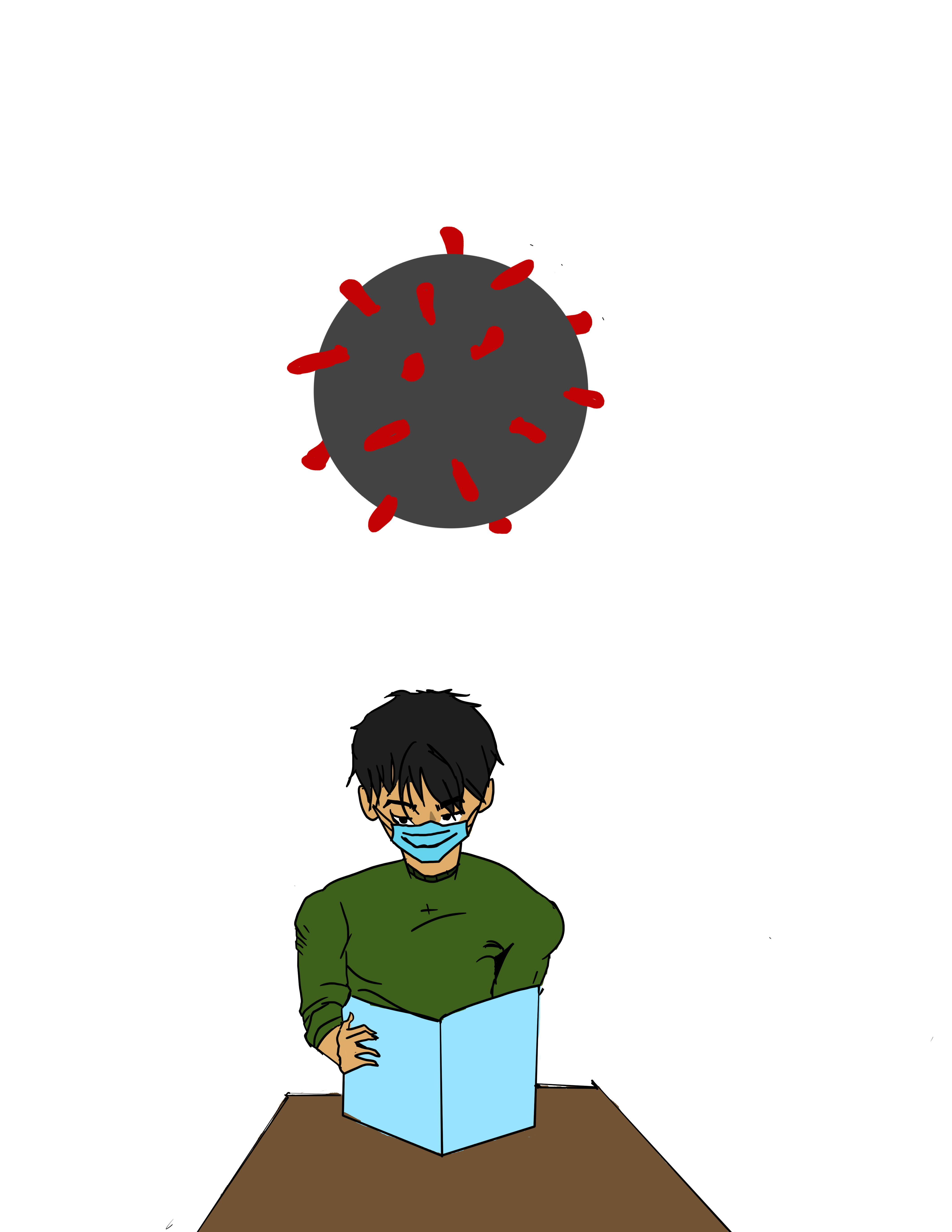

Due to the new Omicron variant of COVID-19, California’s January infections have spiked to a record high daily average of more than 119,000 reported cases. The San Mateo Union High School District opted to have its students return to in-person school after winter break, despite the potential health concerns. Avoiding distance learning in favor of increasing safety protocols was and continues to be the right decision, both because of evidence from studies on COVID-19 transmission and the educational, social and emotional toll distance learning has taken on students and teachers alike. As the pandemic continues to evolve, avoiding distance learning remains a vital goal.
The collective experience of the SMUHSD over the last month demonstrates how we are able to keep school safely open, even throughout a surge. Winter break concluded on Jan. 4 and students returned to campus on Jan. 5. According to the official website for California Coronavirus, from Jan. 3 through Jan. 9, unvaccinated individuals were 4.1 times as likely as vaccinated persons to get COVID-19. At the beginning of the year, over 83% of students and 90% of teachers district-wide were reported to be fully vaccinated. Although an exact approximation is not available, it is likely these numbers have risen since then. The District’s high vaccination rate ensures that the majority of students and teachers will avoid severe illness, including hospitalization.
Factors such as mandatory masking and ventilation in classrooms have been proven to lower chances of the virus spreading through schools. Unlimited N95 masks are available at the Health Office and closed spaces have been somewhat ventilated. Mitigation factors such as the above are sufficient in reducing risk to an acceptable amount.
“The District should prioritize keeping schools open”
The District has also provided free testing, which has been widely used with over 25,000 tests being administered since the return from winter break. The testing program, which students should continue to utilize for the safety of themselves and those around them, ensures the District is able to monitor the community’s COVID-19 cases. It also allows students and teachers to stay home when they test positive to further prevent transmission. Quarantined individuals have the ability to come to school for testing to guarantee they only return to school once safe.
Although students returning from at-home isolation due to positive tests will most likely have some schoolwork to catch up on, returning to distance learning would be far more consequential for the majority of students. The academic and mental health struggles that previously accompanied online learning were severe. According to EdSource, in 2021, standardized test scores in California went down by up to 12% as a result of virtual learning. High school graduation rates were also down after a decade of increasing. Students of color were especially impacted. One study by the U.S. Department of Education estimated white students lost one to three months of learning while students of color lost three to five months.
In addition, both students and teachers would face mental health ramifications if the District moved to virtual learning, which have been experienced far and wide among schools internationally during the last two years. Isolating at home removes the social aspect of school, which strongly impacts social and emotional health. According to the U.S. Department of Education, 45% of parents who reported their child experiencing harm named isolation as a key reason. As COVID-19 becomes a normalized part of life, it is increasingly important to remember the negative consequences closing down schools would have.
Expecting every student to feel comfortable with in-person school, though, brings into question the personal situations students may have to deal with. It is unfair to force vulnerable students to attend in-person school. An alternate solution could be fairly easy to develop, since the majority of teachers are already providing sick students with online work to complete at home. Allowing certain students the opportunity to isolate themselves in their homes and complete work remotely for a limited amount of time in order to maintain their personal health or the health of their family is an effective course of action.
Because of efforts to mitigate the transmission and health impact of COVID-19 throughout Aragon’s community, the consequences of attending school in-person have been significantly lessened. The benefits of avoiding distance learning far outweigh the risks, both now and in the foreseeable future, so the District should prioritize keeping schools open.



